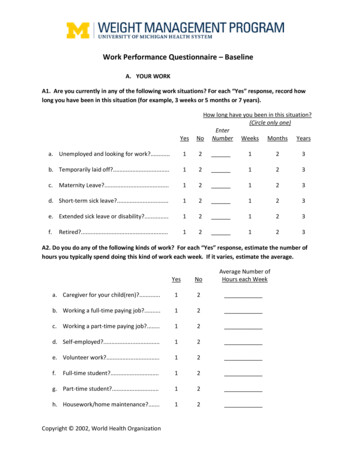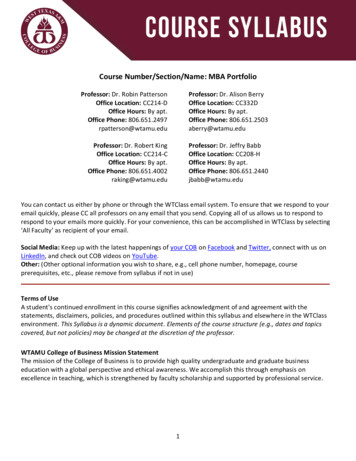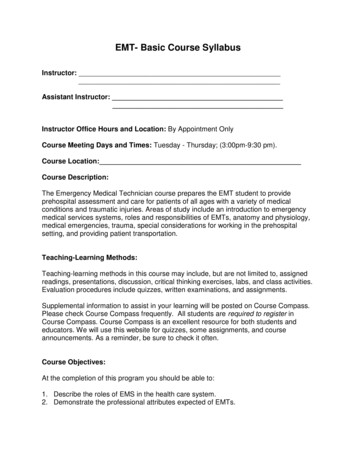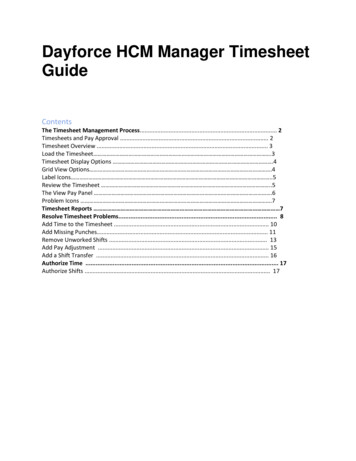
Transcription
Welcome to Online Office Hours!We’ll get started at 2PM ET
Library of CongressOnline Office HoursWelcome! We’re glad you’re here! Use the chat box tointroduce yourselves. Let us know: Your first name Where you’re joining us from Grade level(s) and subject(s) you teach
“Challenges to the Comics Code Authority” anda Glimpse into the Library’s Comic ArtsCollectionMartha KennedyCurator of Popular & Applied Graphic Art, Library of CongressPrints and Photographs DivisionRichard D. DeverellPhD Candidate, Department of History, SUNY BuffaloLibrary of Congress Swann Foundation Fellow, 2019-2020Brought to you by the Library’s Learning and Innovation Office and the Library’s Prints & Photographs Division in collaborationwith the Swann Foundation for Caricature and Cartoon
Comic Arts Collections at the Library of CongressPrints and Photographs Division holds multiple collections of original art for comicswithin its holdings of an estimated 129,000 original cartoon drawings and prints,including: Swann Collection of Caricature and Cartoon 400 records for comic strips; 20 comic book page drawings Cartoon Drawings 400 records for comic strips; 50 records for comic book page drawings Wood Collection of Cartoon and Caricature Drawings 200 digitized comic strips to dateSerials & Government Publications Division holds the largest publicly accessiblecollection of comic books in the United States: over 12,000 titles in all, totalingmore than 140,000 issues. (Completing a Comic Book Request form is required foruse of the collection.)From “Comic Art” Exhibition press release, 2019
Related Resources on the Library’s WebsiteSelected Library of Congress exhibitions online that feature comics: Comic Art: 120 Years of Panels and Pages Drawn to Purpose: American Women Illustrators and Cartoonists Cartoon America [Selections from the Art Wood Collection]Other Library of Congress freely accessible digital collections containing comics: Webcomics Web Archive Focuses specifically on comics created for the web. Chronicling America Gives access to millions of pages of historic American public domain newspapers. Morethan 2,100 titles, published in 40 states and territories and the District of Columbia. Try search terms: comic, comic strips, funnies, commix, comic books. You might alsoconsider searching for particular cartoonists, by name. *Coming soon* LibGuide – Caricature and Cartoon: A Resource Guide
Challenges to the ComicsCode AuthorityPresented byRichard D. DeverellPhD Candidate, Department of History, SUNY BuffaloLibrary of Congress Swann Foundation Fellow, 2019-2020
Dr. Fredric Wertham March 20, 1895 – November 18, 1981 Founded Lafargue Clinic in Harlem, NY in1946 Testified with Hilde Mosse (also of theLafargue Clinic) about the effects ofsegregation in Wilmington, Delaware Supported in this by Richard Wright andRalph EllisonThis case was combined with Brown v.Board of EducationPrimarily known for Seduction of theInnocent and his testimony at the SenateSubcommittee on Juvenile Delinquencyhearings in 1954Library of Congress, Prints and Photographs Division, NYWT&S Collection, LC-USZ62-135434
Seduction of theInnocent Published in April 1954 Argued that Wonder Woman “is afrightening figure for boys, [and] she is anundesirable ideal for girls, being the exactopposite of what girls are supposed towant to be.” (pg. 33) Argued, “Comic books create sex fears ofall kinds.” (pg. 185) Said that Batman and Robin’s lives asBruce Wayne and Dick Grayson were “likea wish dream of two homosexuals livingtogether.” (pg. 190) Analyzed advertisements in comics for zipguns, knives, and diet pills (pg. 199-201)
Senate Subcommitteeon JuvenileDelinquency Met on April 21, 22, and June 4, 1954 Fredric Wertham’s testimony reiteratedmany points from Seduction of theInnocent William Gaines, publisher of EC Comics,tried to defend the content of horrorcomics as appropriate to the horrorgenre, but his testimony receivedunfavorable reactions in the press Senator Estes Kefauver warned the comicbook industry, “any action on the part ofthe publishers of crime and horror comicbooks, or upon the part of distributors,wholesalers, or dealers with reference tothese materials which will tend toeliminate from production and sale, shallreceive the acclaim of my colleagues andmyself.”Senator Hendrickson with a display of comic books during the Senate Subcommittee on JuvenileDelinquency hearings, April 1954. (TIME Magazine)
The Comics CodeAuthority Formed in 1954 Banned excessive violence Could not show sympathy withcriminals Banned horror and gore Limited the size of the word “crime”on comic book covers Strict limits on depiction of sexuality Banned profanity Controlled what types of productsmay be advertised
Health, Education, &Welfare Michael F. White, the Assistant to theDirector, Office of Communications, forNarcotic Addiction and Drug AbuseInformation, asked Stan Lee to help warnof the danger of drug use Stan Lee decided to incorporate that intothe ongoing Amazing Spider-Man as amajor plot point rather than produce aspecial promotional comic bookMichael F. White, Letter to Stan Lee, October 8, 1970, Box 12,Folder 1, Stan Lee Papers, Collection Number 8302, AmericanHeritage Center, University of Wyoming.
Amazing Spider-Mannos. 96-98 May – June 1971 None of these three issues received Codeapproval At this time, Marvel typically placedthe Code seal of approval next tothe “N” in Spider-Man. Marvel Entertainment Group
Positive Press Reaction In addition to the New York Times, NewYork Magazine, Rolling Stone, and evencollege papers like the HighacresCollegian (Penn State University) praisedMarvel for resisting the Code to publishan anti-drug story The Highacres Collegian used theheadline “Big Brother’s Bubble Bursts,”even though Marvel published the storyat the behest of a government agencyLawrence Van Gelder, “A Comics Magazine DefiesCode Ban on Drug Stories,” The New York Times(New York, NY), February 4, 1971: 37.
1971 Code Revision Narcotics and drug trafficking may beportrayed as long as explicitly portrayedas a dangerous and illegal vice Vampires, ghouls, and werewolvesallowed in the “classic tradition” Continued to limit the amount ofgore, howeverStill upheld restrictions on sexuality,profanity, and advertisements
Green Lantern no. 76 April 1970 Challenges the failure of comic booksuperheroes to address social issues Discusses housing inequality Housing in the north grewincreasingly segregated, sometimesthrough sundown laws, but morecommonly through restrictivecovenants and raciallydiscriminatory lending policiesPhotograph: Lee A. Deverell/Richard D. Deverell
Epilogue from GreenLantern no. 76 Engages with 1960s-1970s issues ofalienation, civil rights, campus unrest, andthe loss of Martin Luther King, Jr. andRobert F. Kennedy in 1968 – a year seenas one of the most traumatic in U.S.history at the timePhotograph: Lee A. Deverell/Richard D. Deverell
Green Lantern no. 85 October 1971 Followed Marvel’s anti-drug story and the1971 Code revision Note the Code seal of approval onthe right side of the cover under the“W” in Green ArrowPhotograph: Lee A. Deverell/Richard D. Deverell
Detail from GreenLantern no. 85 Further evokes youthful feelings ofalienation amid the social upheaval of the1960s-1970s Note how the comic portrays multi-racialdrug use on the same page The depiction of Speedy differs from thecover On the cover, he wears hissuperhero sidekick costume whilehe’s dressed in civilian clothes here The cover included a needle, bottle,and spoon as part of his drug kit;here he just has a packetPhotograph: Lee A. Deverell/Richard D. Deverell
The Final Code Final revision in 1989 Allowed publishers to create moreadult material to be sold directly incomic shops Language must be appropriate forintended readers Characterizations must showsensitivity to national, ethnic,religious, sexual, political, andsocioeconomic differences; reflectprevailing social attitudes Marvel Comics left in 2001 DC and Archie Comics left in 2011
Thank you!Questions? Post them in the chat box!
Aug 18, 2020 · collection of comic books in the United States: over 12,000 titles in all, totaling more than 140,000 issues. (Completing a Comic Book Request form is required for use of the collection.) Comic











